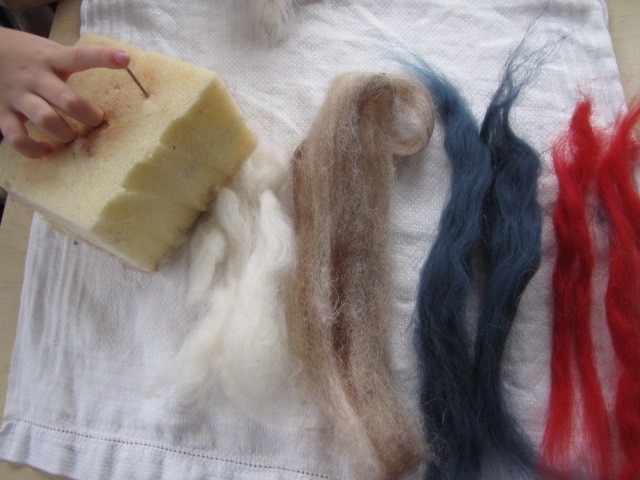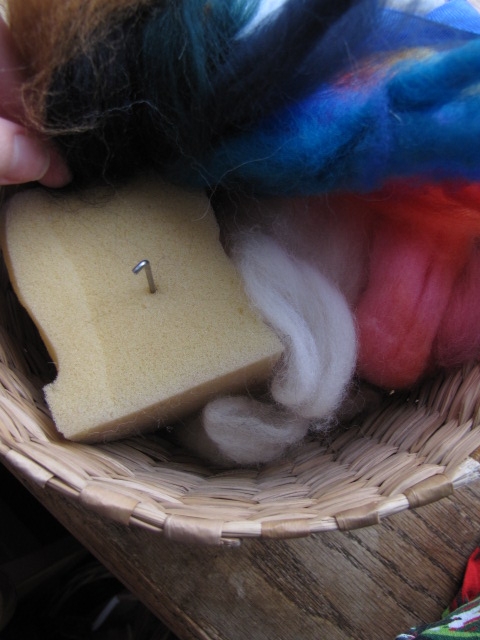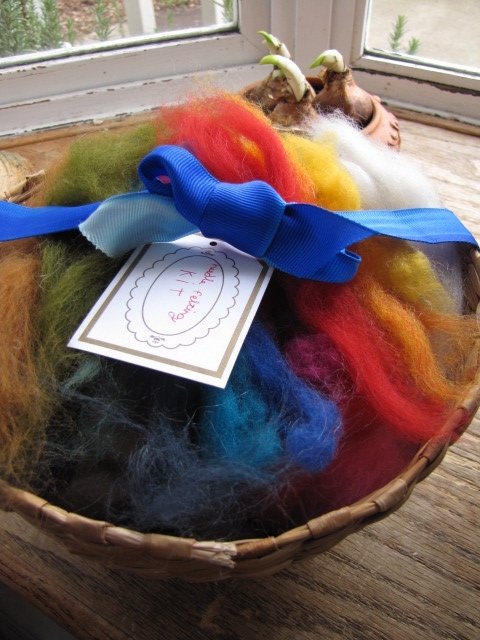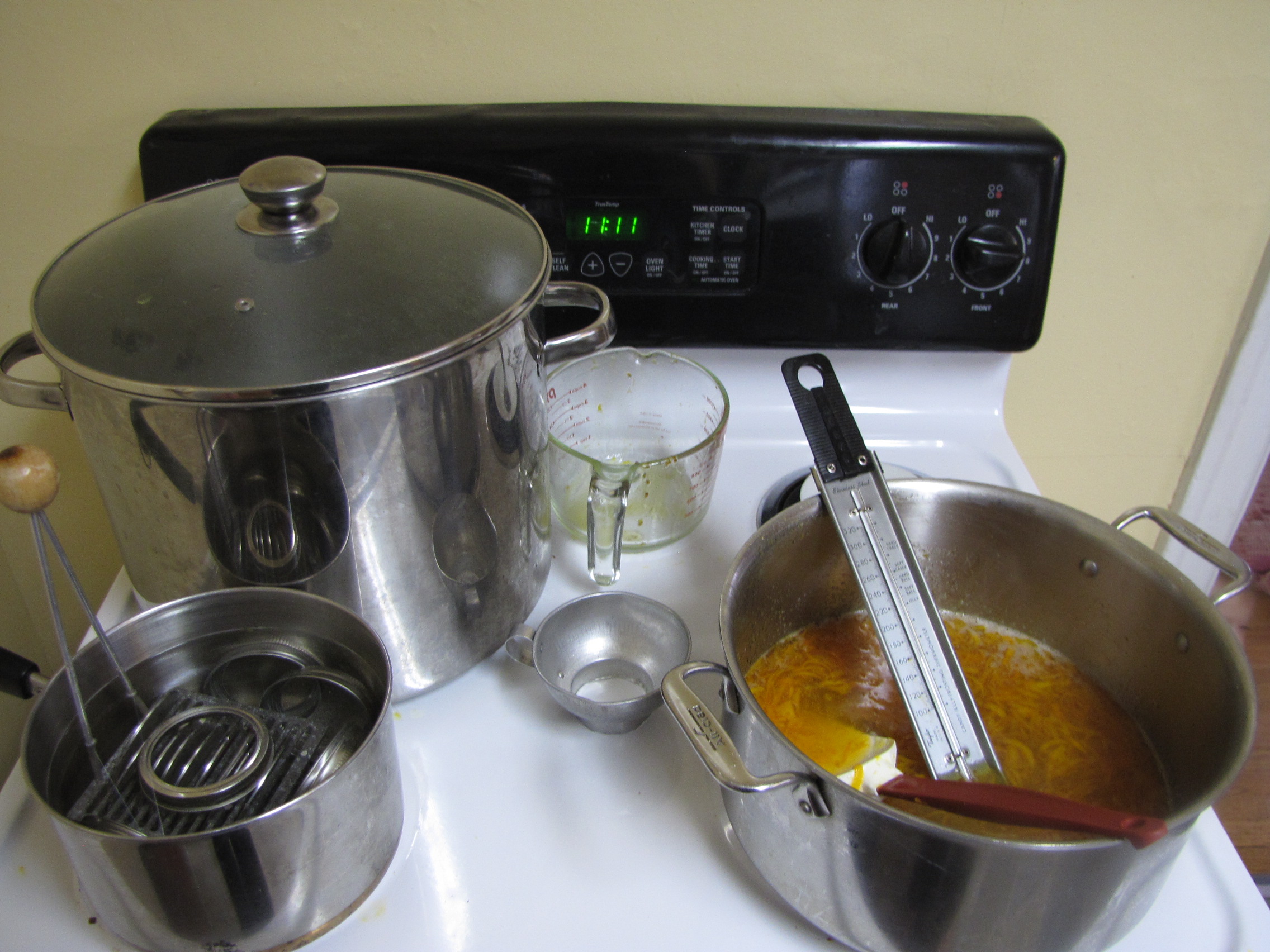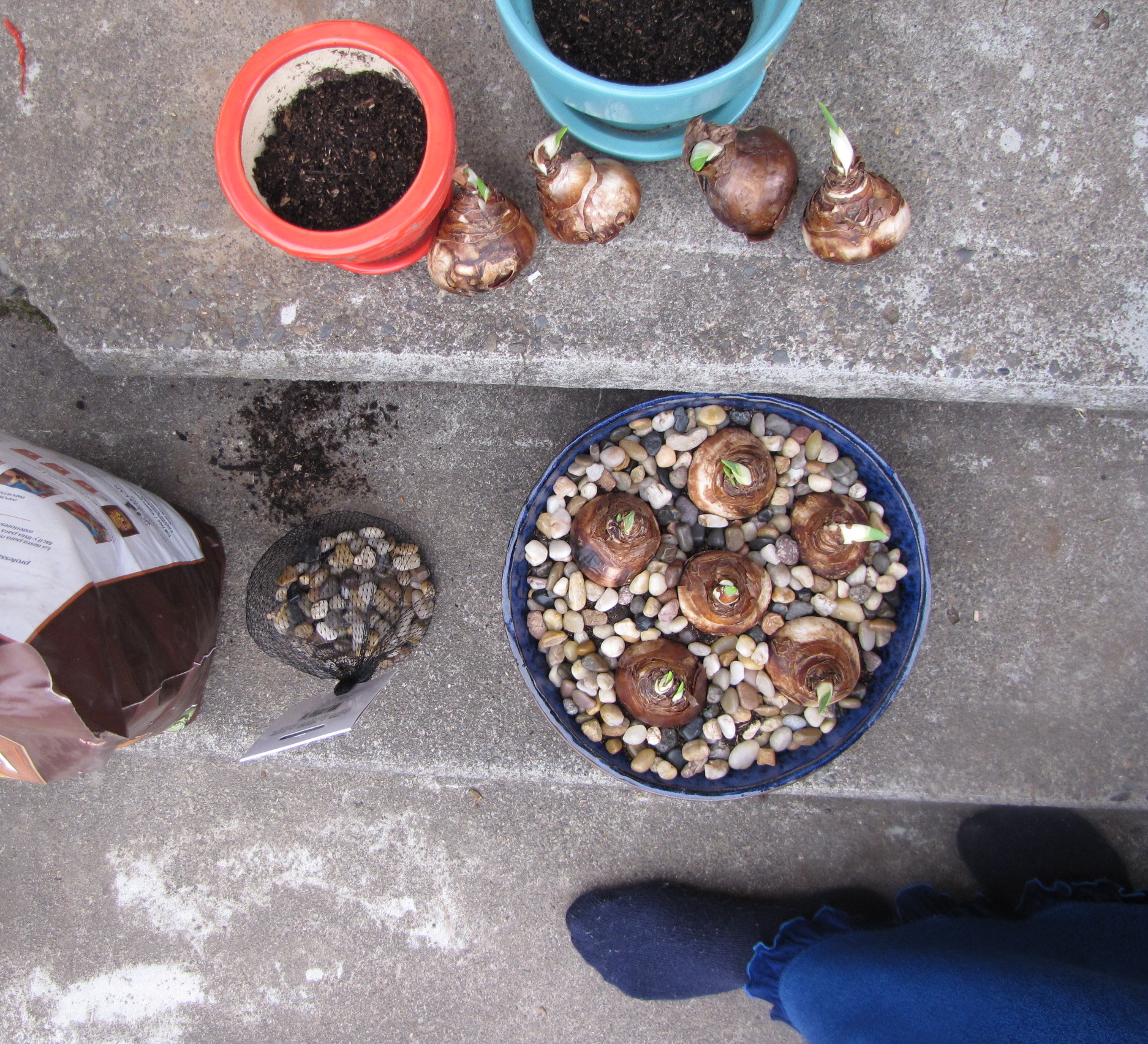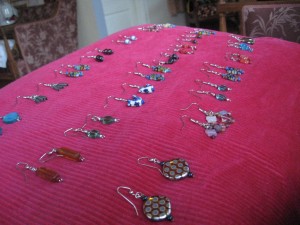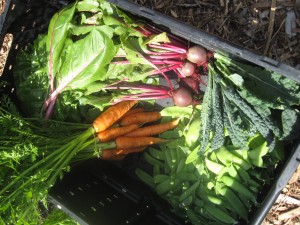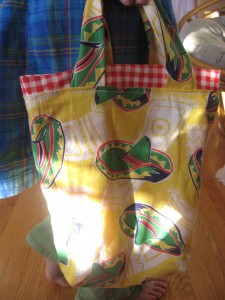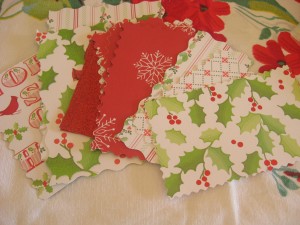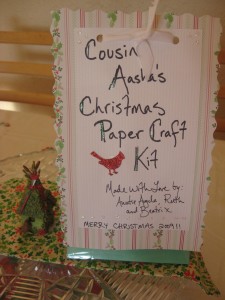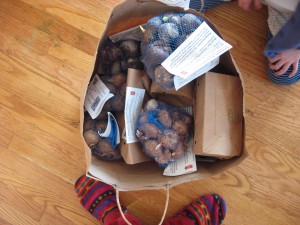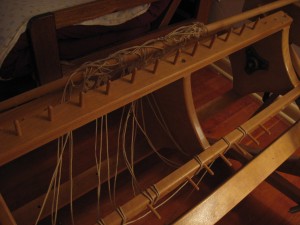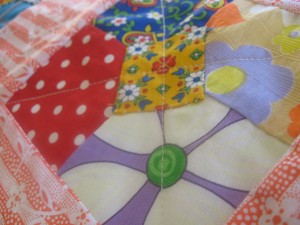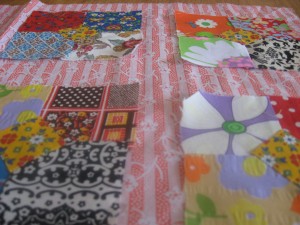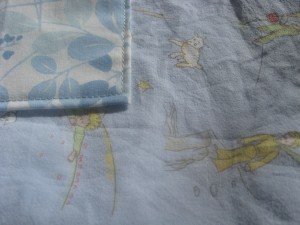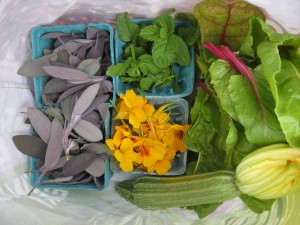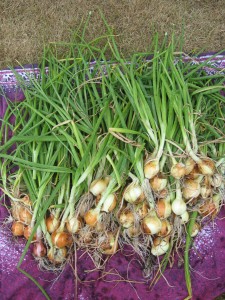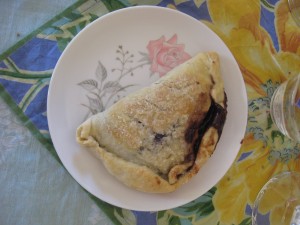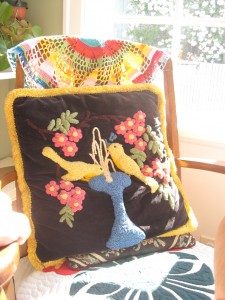
We like to make an assortment of flavored liqueurs to enjoy on cold winter evenings (and to give as gifts). The list includes apricot or peach brandy, lemoncello, elderflower cordial, raspberry cordial (alcoholic, and non-), and cherry brandy (which makes a very special soaked-fruitcake at Christmas).
I started making apricot vodka about 15 years ago (back in high school!) for my grandfather, but my current method was inspired by an article I saw 4 or 5 years ago in Backwoods Home Magazine (our library used to carry it – it’s a very…interesting magazine full of back-to-the-land and survivalist- type articles).

This year, I added Marionberry Liqueur to the list, since the farmer’s market had some really beautiful looking marionberries. The process would work for most any fruit – I make cherry and peach brandy in a similar manner.
Here’s my recipe – which takes 5 weeks, but involves little effort-
Larksong’s Marionberry Liqueur
5 quart mason jars, lids and rims, washed with very hot soapy water, and sterilized (in dishwasher or boiled for 15 min.)
2 cups well-crushed berries (3-4 cups whole, measurement doesn’t have to be exact – if using stone fruit, wash and pit, but do not skin)
1 bottle inexpensive brandy or vodka (I personally like brandy for cherries, peaches, marionberries, and vodka for raspberries, citrus, apricots, pears)
white or brown sugar (I prefer brown sugar for peach brandy)
Directions –
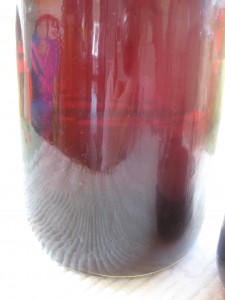
Week 1 – To one mason jar, add crushed fruit and 3 cups of alcohol. Put lid and screw band on and invert several times. Then, leave in a dark place (like a kitchen cupboard). After a week, the alcohol will take on the beautiful color and much of the flavor of the fruit.
Week 2- Decant the alcohol carefully into the 2nd jar, close it, label this jar #1 and set aside.  Sprinkle the berries that remain in the first jar with about 1/2 cup sugar. Put the lid and screw band on, and invert several times. Put both containers back in the dark for 1 week. (The sugar will draw excess alcohol out of the fruit, along with LOTS of fruit flavor.)

Week 3 – Decant the alcohol from the berries again (you will have between 1/2 and 3/4 cup – see middle jar above), this time, label the jar #2, and set aside. Once again, sprinkle the berries that remain with sugar (just enough to coat the fruit this time). Put the jars up for another week.
Week 4 – Repeat the process of week 3.
Week 5 – Carefully decant the last bit of liquid (don’t pitch the fruit! – the remaining fruit is wonderful over ice cream, or can be used in a loaf of quick bread. If you used peach slices or apricot halves, they can be packed in jars with half a vanilla bean or a cinnamon stick, covered with simple syrup, and kept in the fridge until later – serve with a slice of poundcake).
Now, take a little spoonful of each container and taste them. Notice that Jar #1 is all alcohol, not very sweet, and as you progress through the jars, they will be more sugary, less alcoholic. How sweet do you want the liqueur to be? This is purely up to you – I always add all of jars 1 and 2 together, I add some of jar 3 and 4 little by little until I get the desired sweetness. Any leftover alcoholic-fruit-syrup is enjoyed over ice cream (sometimes there’s as much as 1/2 cup left, and it’s very sugary).
Strain the liqueur through several layers of cheesecloth or a very clean flour-sack towel, put into small bottles, cork, label, and store in a dark place (so as not to fade the rich color). Enjoy as a digestif or a bit drizzled into hot tea. Use within 6 months.
Have you blogged about a favorite traditional homemade preserved food? If so, please share the link with me, and I’ll add it to this post – I’d love to learn what other folks enjoy making. Thanks!

 Every magic potion kit needs something in which to grind the ingredients. We started wtih a wooden mortar + pestle set I found online. We polished it with some of our Beeswax Polish, and set about finding potion ingredients that could be ground in it.
Every magic potion kit needs something in which to grind the ingredients. We started wtih a wooden mortar + pestle set I found online. We polished it with some of our Beeswax Polish, and set about finding potion ingredients that could be ground in it.
 I added sweet myrrh resin (Opoponax, from Somalia), which smells amazing and is fun to grind up.
I added sweet myrrh resin (Opoponax, from Somalia), which smells amazing and is fun to grind up. I lined a thrifted wooden box with some gardeny-herby fabric cut to fit, then Hal helped arrange the jars of herbs and flowers and magical-doo-dads and dropper bottles and wrap it all up.
I lined a thrifted wooden box with some gardeny-herby fabric cut to fit, then Hal helped arrange the jars of herbs and flowers and magical-doo-dads and dropper bottles and wrap it all up.






